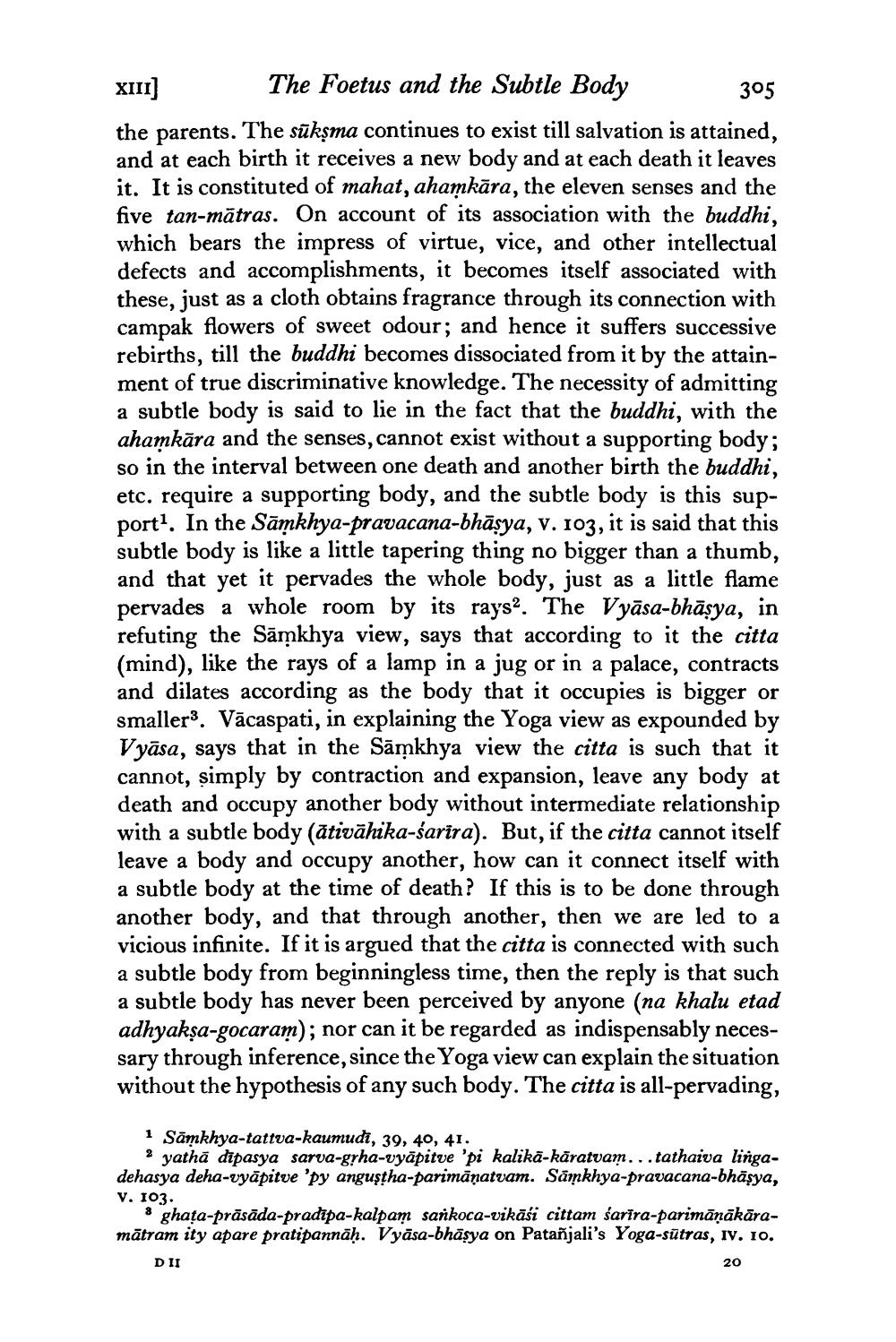________________
XIII]
The Foetus and the Subtle Body
305
the parents. The sūkṣma continues to exist till salvation is attained, and at each birth it receives a new body and at each death it leaves it. It is constituted of mahat, ahamkāra, the eleven senses and the five tan-mātras. On account of its association with the buddhi, which bears the impress of virtue, vice, and other intellectual defects and accomplishments, it becomes itself associated with these, just as a cloth obtains fragrance through its connection with campak flowers of sweet odour; and hence it suffers successive rebirths, till the buddhi becomes dissociated from it by the attainment of true discriminative knowledge. The necessity of admitting a subtle body is said to lie in the fact that the buddhi, with the ahamkāra and the senses, cannot exist without a supporting body; so in the interval between one death and another birth the buddhi, etc. require a supporting body, and the subtle body is this support1. In the Samkhya-pravacana-bhāṣya, v. 103, it is said that this subtle body is like a little tapering thing no bigger than a thumb, and that yet it pervades the whole body, just as a little flame pervades a whole room by its rays2. The Vyasa-bhāṣya, in refuting the Samkhya view, says that according to it the citta (mind), like the rays of a lamp in a jug or in a palace, contracts and dilates according as the body that it occupies is bigger or smaller3. Vācaspati, in explaining the Yoga view as expounded by Vyasa, says that in the Samkhya view the citta is such that it cannot, simply by contraction and expansion, leave any body at death and occupy another body without intermediate relationship with a subtle body (ātivāhika-śarīra). But, if the citta cannot itself leave a body and occupy another, how can it connect itself with a subtle body at the time of death? If this is to be done through another body, and that through another, then we are led to a vicious infinite. If it is argued that the citta is connected with such a subtle body from beginningless time, then the reply is that such a subtle body has never been perceived by anyone (na khalu etad adhyakṣa-gocaram); nor can it be regarded as indispensably necessary through inference, since the Yoga view can explain the situation without the hypothesis of any such body. The citta is all-pervading,
1 Samkhya-tattva-kaumudi, 39, 40, 41.
2 yatha dipasya sarva-gṛha-vyāpitve 'pi kalikā-kāratvam...tathaiva lingadehasya deha-vyapitve 'py anguşṭha-parimāṇatvam. Sāmkhya-pravacana-bhāṣya,
V. 103.
a ghaṭa-prāsāda-pradipa-kalpam sankoca-vikāsi cittam sarira-parimāṇākāramatram ity apare pratipannāḥ. Vyasa-bhāṣya on Patanjali's Yoga-sutras, IV. 10.
20
DII




